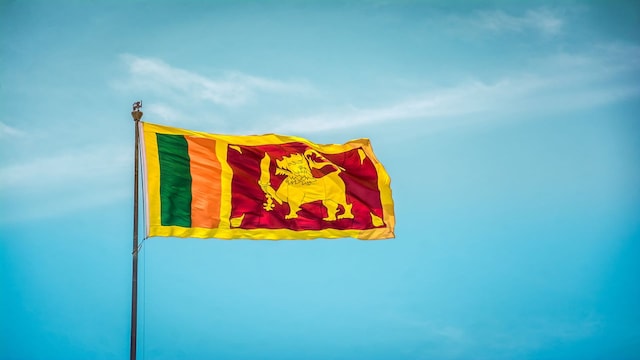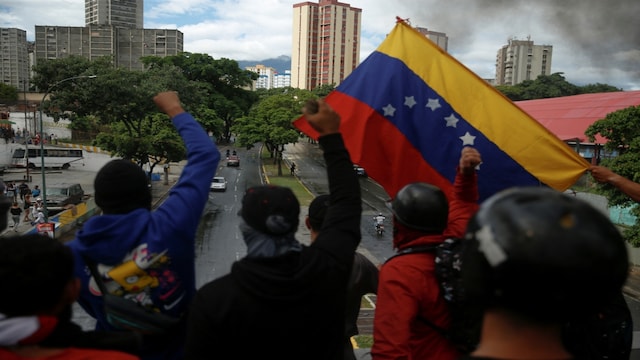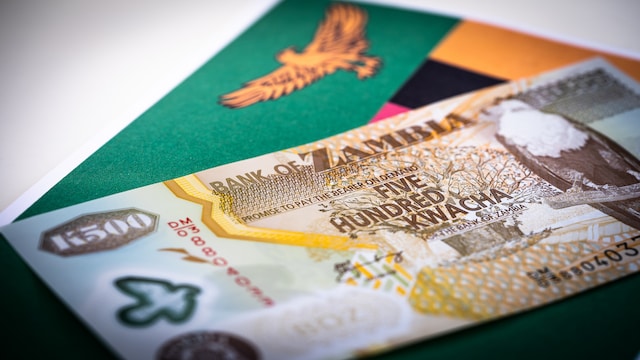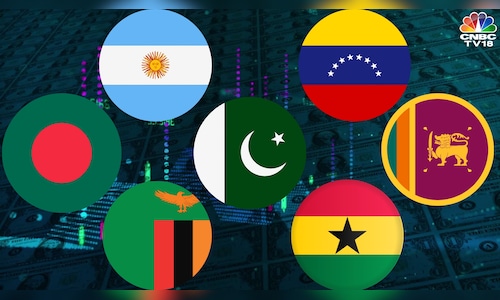Pakistan: The International Monetary Fund may have rescued Pakistan from bankruptcy for now, but the economy is in tatters. A similar $3 billion IMF bailout avoided a default in 2023, but the country, also mired in a political crisis, needed one more bailout this year. The latest multi-year loan of $7 billion is a drop in the ocean considering that at least 60% of tax revenue will go to paying off old debts. In May 2024, the IMF estimated that Pakistan will need at least $123 billion in external financing through 2029. The country’s GDP fell to $374.904 billion in 2023-24 from $375.44 billion in 2022. Despite being In a downward trend, inflation stood at 9.6%. in August. The population’s pain will only get worse before it gets better. Foreign exchange reserves are back above $10 billion, including a $1 billion tranche from the IMF, for the first time since April 2022, but that won’t even cover three months of imports.

Sri Lanka: The island nation defaulted on its $83 billion debt in April 2022, when its foreign exchange reserves fell to just $50 million. The situation is now returning to normal. Foreign exchange reserves now stand at $5.95 billion, a three-year high. Inflation has fallen from 67% in September 2022 to just 1.1% in August 2024. GDP, after falling from about $94 billion in 2017 to $84.4 billion in 2023, has grown between January and June 2024. The economy has been stabilizing after contracting 9.5%. % in 2022 and 2023. However, rising poverty and debt obligations may hinder the recovery. Sri Lanka defaulted on its debt two years ago. In September, the country reached an agreement with creditors to restructure a $12.5 billion debt. Lenders will accept a 27% haircut as part of the deal.

Bangladesh: The country’s total debt amounts to $156 billion, five times more than in 2008 and is rated “junk” by global rating agencies such as S&P Global. The sovereign rating was downgraded even before the latest political crisis led to a regime change. As a result, the country’s foreign exchange reserves have fallen from $32 billion in January 2023 to $20 billion in September 2024. The central bank has devalued the taka in recent years, but that has not helped so far. The Asian Development Bank expects inflation to rise to 10.1% in FY25, largely due to high food prices. There are also fears of a bank run due to the increasing number of unpaid loans. While there is no debt crisis right now, the economy is getting worse and needs a quick fix. The country has a lifeline of 4.7 billion dollars approved by the IMF, which would be released for three and a half years until 2026.

Venezuela: The country’s debt currently amounts to $154 billion, an amount that the country began to default on in 2017. Its GDP has decreased from $372.59 billion in 2012 to $102.33 billion in 2024. It was the richest country in Latin America in a moment in history and today it is in the middle of the crisis. bankruptcy led by an authoritarian leader who declared himself winner in July, triggering political turmoil that threatens an already slow economic recovery. The economy grew 5% last year and is expected to grow 4% this year. The easing of global sanctions is partly responsible for the improved economic performance. The oil-rich country is also in talks to restructure its debt. Meanwhile, 82% of the country’s population lives in poverty and, although inflation is cooling, price growth is still 25% higher than a year earlier, according to the latest central bank data.

Argentina: The South American country has defaulted on its sovereign debt three times in the 21st century. It owes more than $400 billion to its creditors. It has had several debt restructurings in the past, the most recent being in 2023. President Javier Milei’s reforms have reduced annual inflation from 300% to 236% in eight months. But that figure is still high compared to normal standards. The economy has also begun to grow, albeit slowly. However, poverty levels have exceeded 52.9%. Due to the uncertain economic outlook, Oxford Economics sees a 75% chance of default in 2025 and 2027.

Zambia: The southern African country defaulted on its Eurobond debt in 2020. This year, it also became the first country to restructure its $6.3 billion foreign debt. But the country faces significant challenges. Its balance of external arrears reached 26% of GDP in 2023, which, according to the IMF, is unsustainable. Additionally, the country still must restructure at least $3.3 billion in commercial loans. The IMF believes that if commercial loans and certain clauses of the 2024 debt restructuring agreement are not restructured, Zambia could be on the brink of another default.

Ghana: The total debt of the African country amounts to 44 billion dollars: 70.6% of GDP. It defaulted on most of its foreign debt in December 2022, plunging the economy into crisis. Debt costs and inflation increased. Ghana’s foreign exchange reserves decreased from $9.7 billion in 2021 to $5.9 billion in 2023. The economy is now recovering and GDP growth between January and June 2024 averaged 5.8%. Inflation has fallen to its lowest level since 2022. The IMF maintains that its $3 billion package, approved in May 2023, has helped the economy. The country’s prospects look brighter after recently reaching a $13 billion debt restructuring deal. Lenders will release 40% of the debt as part of the deal, according to a Financial Times report.
Disclaimer:
The information contained in this post is for general information purposes only. We make no representations or warranties of any kind, express or implied, about the completeness, accuracy, reliability, suitability or availability with respect to the website or the information, products, services, or related graphics contained on the post for any purpose.
We respect the intellectual property rights of content creators. If you are the owner of any material featured on our website and have concerns about its use, please contact us. We are committed to addressing any copyright issues promptly and will remove any material within 2 days of receiving a request from the rightful owner.

